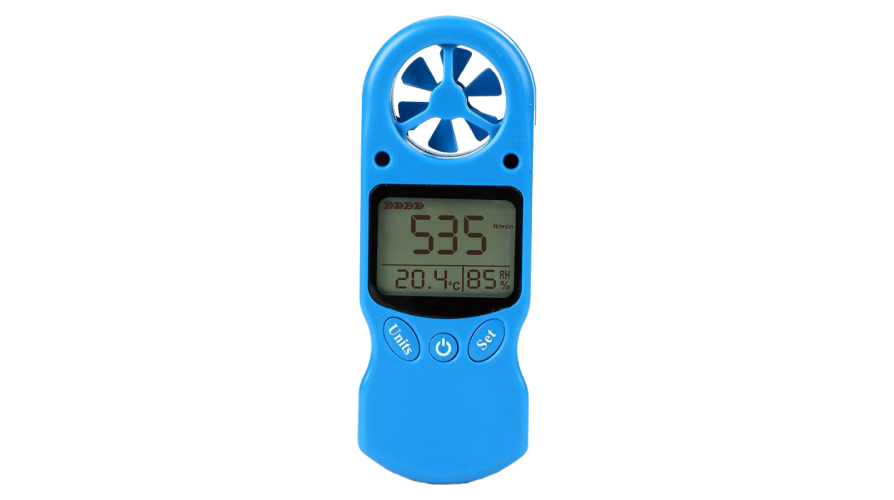How an Anemometer Can Boost Your Weather Tracking System
How an Anemometer Can Boost Your Weather Tracking System
Blog Article
Anemometers Revealed: Recognizing Their Significance in Ecological Tracking and Safety Actions
The function of anemometers in environmental surveillance and safety and security procedures is usually underestimated, yet their importance is undeniable. From meteorology to aeronautics safety and security, anemometers play an important duty in giving precise data that notifies decision-making procedures and boosts total safety.
History of Anemometers
The advancement of anemometers can be traced back to the ancient civilizations where primary wind determining devices were initial made use of. These very early wind dimension tools laid the foundation for the advancement of much more innovative anemometers over time. One of the earliest known anemometers was the hemispherical mug anemometer created by Leon Battista Alberti in the 15th century. This design contained four hemispherical mugs that accumulated wind energy, providing a measurement of its intensity based on the rate of rotation.
In the 18th century, the distinguished researcher John Thomas Romney Robinson introduced the Robinson anemometer, which included 4 hemispherical mugs mounted on straight arms that expanded from a main axis. This design ended up being a criterion in atmospheric dimensions because of its precision and dependability. Over the years, innovations in innovation caused the growth of even more contemporary anemometers, including ultrasonic anemometers and laser Doppler anemometers, supplying increased accuracy and efficiency in measuring wind speed and instructions. The history of anemometers showcases an impressive trip of development and progress in the area of meteorology.
Sorts Of Anemometers
Throughout the field of meteorology, different types of anemometers have been created to properly measure wind rate and instructions. Sonic anemometers use ultrasonic signals to gauge wind rate and direction accurately. Hot-wire anemometers run based on the principle that the cooling effect of wind on a warmed cord is proportional to the wind speed.
Applications in Weather Forecasting
Having actually gone over the numerous kinds of anemometers utilized in weather forecasting for measuring wind rate and instructions, it is important to explore their sensible applications in the field. Anemometers play a crucial function in meteorology by offering precise and real-time data on wind conditions (anemometer). Meteorologists make use of anemometers to monitor wind rate and direction to anticipate weather patterns, concern warnings for serious weather events like tornados, hurricanes, and cyclones, and evaluate weather for aviation safety
In meteorology, anemometers assist in comprehending regional and local wind patterns, which are vital for forecasting weather adjustments and determining weather patterns. These gadgets are additionally used in study to study microclimates, city warm islands, and air contamination dispersion. Furthermore, anemometers are utilized in farming to enhance plant management methods, such as watering and chemical application, based on wind conditions.
Relevance in Aeronautics Safety
An essential facet of guaranteeing aviation safety and security depends on the careful monitoring of wind conditions making use of anemometers. Anemometers play an essential role in aeronautics by offering real-time information on wind speed and instructions, assisting pilots in making educated decisions during take-off, landing, and flight. Strong and uncertain winds can substantially influence aircraft procedures, making it essential for aeronautics authorities to depend on accurate wind dimensions to make sure the security of passengers and team.

In the vibrant atmosphere of air travel, where even small modifications in wind rate and instructions can have extensive effects, anemometers stand as crucial devices for promoting risk-free and secure flight.
Function in Environmental Research
Anemometers play a critical duty in environmental research study by providing vital data on wind speed and instructions. By precisely measuring wind characteristics, anemometers help scientists examine the movement of contaminants in the air, examine the influence of industrial exhausts, try here and predict the spread of impurities in the environment.


Conclusion
In final thought, anemometers have actually played an important function in environmental surveillance and precaution. With an abundant background and numerous kinds offered, these devices have actually been extensively utilized in weather forecasting, air travel resource security, and environmental research study. Understanding the significance of anemometers is vital for precisely measuring wind speed and direction, which is crucial for forecasting weather condition patterns, guaranteeing secure aeronautics procedures, and carrying out ecological researches - anemometer. Their contributions to these fields can not be undervalued.
One of the earliest well-known anemometers was the hemispherical mug anemometer invented by Leon Battista Alberti in the 15th century. Over the years, advancements in technology led to the advancement of more modern-day anemometers, consisting of ultrasonic anemometers and laser Doppler anemometers, providing increased accuracy and performance in measuring wind speed and instructions. Hot-wire anemometers run based on official source the concept that the cooling result of wind on a warmed wire is symmetrical to the wind speed. Meteorologists utilize anemometers to monitor wind rate and instructions to forecast weather patterns, issue cautions for serious weather events like storms, storms, and twisters, and assess atmospheric problems for aviation safety.
Understanding the relevance of anemometers is important for properly measuring wind speed and direction, which is important for predicting climate patterns, ensuring risk-free air travel procedures, and performing environmental studies. (anemometer)
Report this page